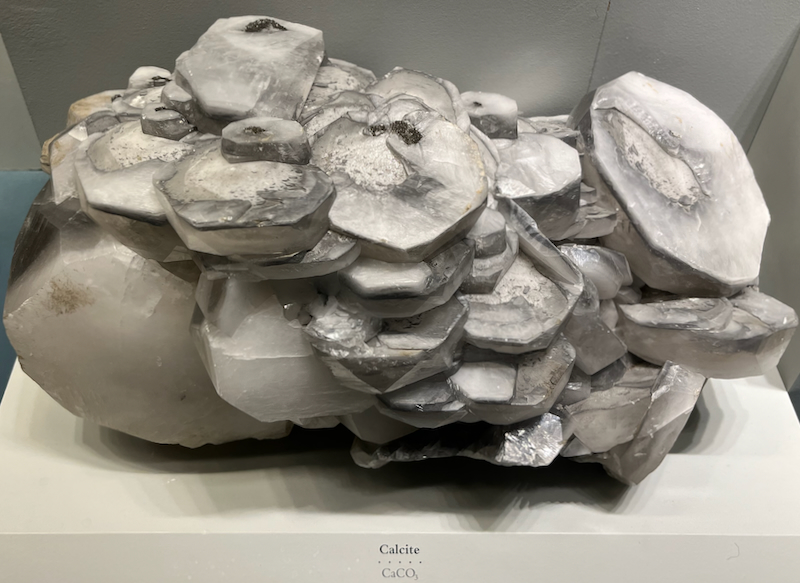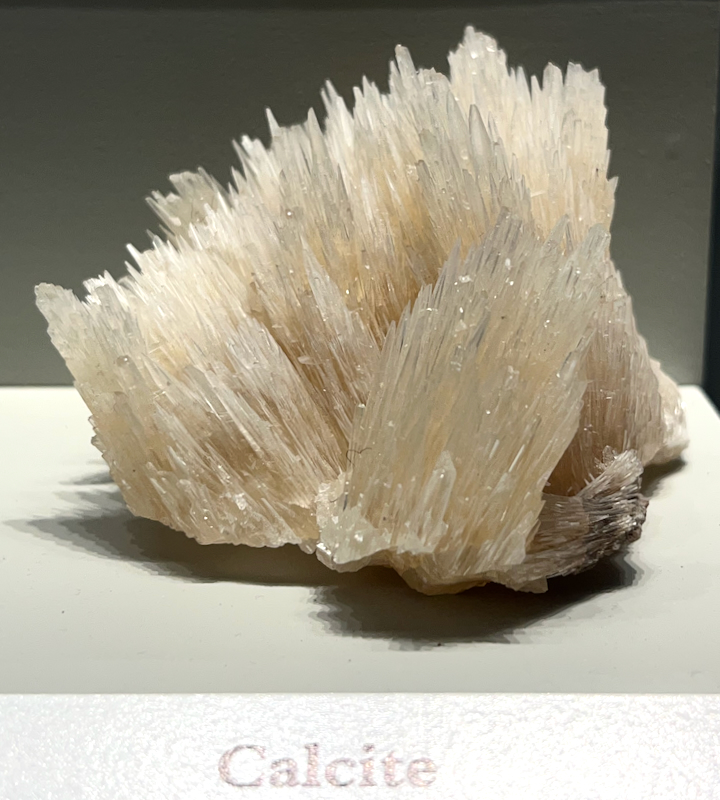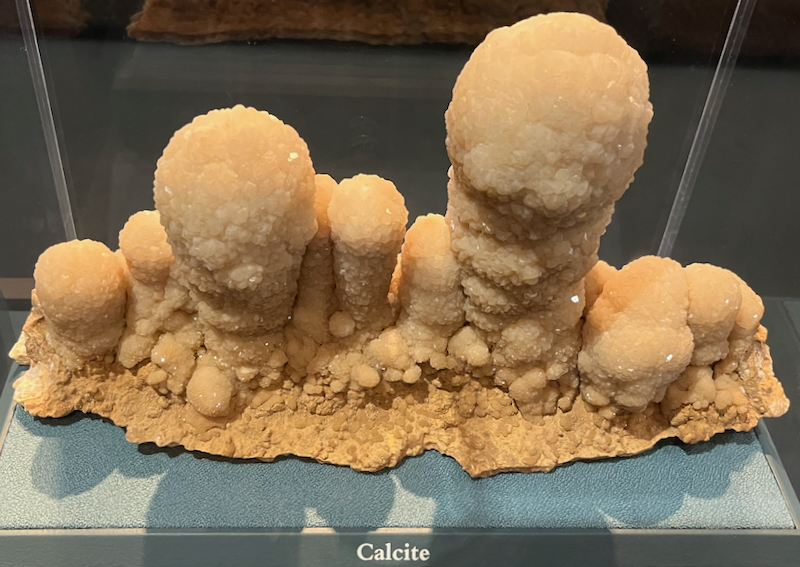Calcite
If you see a bumper sticker that says CaCO3, you’re probably looking at a car owned by someone who loves caves, or maybe just loves calcite. Calcite is the main component of a lot of things we see out in the world—marble, limestone, clam shells—but it also accounts for things we only see inside caves. Much of the stalactites, stalagmites, flow stone, cave pearls, and other formations you see if you walk through a cave, such as Carlsbad Caverns, are made of calcite. One reason why there’s so much calcite around is that for millions of years, gazillions of sea creatures–plankton, shellfish, coral, etc.—have had calcite in or surrounding their bodies. As the world has changed over the eons (millions of years), the calcite from these creatures has settled in thick layers, been covered with layers of other material, and hardened into stone. Calcite is pretty easily dissolved in even weak acid, so when slightly acidic water from rain percolates down through the ground and through those layers, it can dissolve calcite, carry it down into a cave, then release it in tiny particles as it drips. Over many years, this released calcite builds up, creating cool cave formations. Aside from all these formations, calcite also forms crystals of a number of different types, some of which have interesting nicknames. Calcite crystals with long sharp points are called “dogtooth,” while the more stubby crystal points are called “nailhead,” and stacks of flat (also called “tabular”) crystals are called “poker chips,” for example.
| Formula | Group or Type | Shape | Hardness | Specific Gravity | Streak | Luster |
|---|---|---|---|---|---|---|
| Ca(CO3) | — | Trigonal | 3 | 2.71 | White | Vitreous to pearly |





